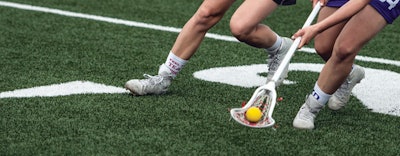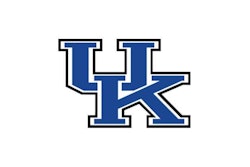
On August 21, 2020, the University of Iowa announced that it was eliminating the men's and women's swimming and diving, men's gymnastics and men's tennis teams. And those suddenly homeless Hawkeyes were not alone. From Stanford University to Appalachian State, schools have cut more than 300 teams from athletic programs throughout the United States since the fall of 2019.
Although the largest number of cuts took place at the NCAA Division I level, cuts were felt at community and junior colleges, NAIA schools, and all levels of the NCAA. They are largely in reaction to the harsh reality that American universities face more than $120 billion in negative financial impact from the COVID-19 pandemic.
When female athletes lose their opportunities, there is often an uproar — as there was in response to Iowa's actions — and the issue of whether cutting teams is contrary to Title IX is an important one that will be felt for years to come in college athletics as the impacts of the pandemic continue.
Title IX's most-prominent prong
Universities did not begin to cut teams to meet the requirements of Title IX until the early 1990s. However, the framework that led to cutting opportunities came in the form of 1979's A Policy Interpretation: Title IX and Intercollegiate Athletics, which was released by what is now the Department of Education. The interpretation laid out a three-prong test that schools must navigate to ensure that they are effectively accommodating the interests and abilities of each sex.
The DOE's Office for Civil Rights and many courts have consistently found that the second and third prongs only apply to the "underrepresented sex" — women — and do not apply to men, as men remain the overrepresented sex at all levels of sport. The second prong focuses on whether schools have a "history and continuing practice of program expansion" for women. Cutting women's teams is anathema to this expansion. The third prong focuses on whether "the interests and abilities" of women "have been fully and effectively accommodated." Cutting women's teams again would not meet this level of accommodation.
As a result, the focus of claims brought by athletes from cut teams has been on the first prong. This prong applies to both men and women and looks to see whether athletic opportunities are being provided for both "in numbers substantially proportionate to their respective enrollments." Schools should compare the percentages of men and women in their student body with the percentages of male and female athletic opportunities they offer.
In other words, if a school's enrollment is 60 percent women, then it must provide close to 60 percent of its athletic opportunities to women. As a result of Iowa's cutting, there would be a 7.9 percent gap between the percentage of women enrolled at the university and the percentage of female athletes in its athletic department. This gap violates the first prong of the OCR test.
Courts first began reviewing claims by cut athletes in the 1990s, when women's teams were eliminated at Indiana University of Pennsylvania, Colorado State and Brown. Although the courts all sustained the women's claims, forcing each university to reinstate the women's teams, they also began to acknowledge that "in times of economic hardship, few schools will be able to satisfy Title IX's effective accommodation requirement by continuing to expand women's athletic programs" [Roberts v. Colorado Board of Agriculture, 998 F.2d 824, 830 (10th Cir. 1993)].
Taking this even further in a case involving Brown University, the 1st Circuit Court of Appeals found that the first prong of the test is a "safe harbor," leading many schools to believe that the only way to meet Title IX requirements was to meet substantial proportionality under prong one [Cohen v. Brown University, 991 F.2d 888 (1st Cir. 1993)]. This led to many men's teams being cut in the 1990s and 2000s, as universities could safely use this means to meet Title IX requirements.
So far, men have not been successful in suing to reinstate their teams. Reviewing claims brought by men from cut teams at the University of Illinois, the 7th Circuit Court of Appeals found that the university "could eliminate the men's [teams] without violating Title IX, since even after ... men's participation in athletics would continue to be more than substantially proportionate... " [Kelley v. Board of Regents, 35 F.3d 265, 270 (7th Cir. 1994)].
Can women's sports be cut?
After these early 1990s cases, schools continued to cut men's opportunities to meet the requirements of Title IX. Courts and several OCR guidance documents reiterated that while this practice was not preferred, it was still a legitimate way to meet Title IX requirements. At the same time, most schools assumed they could not cut women's opportunities, no matter the budgetary or financial concerns alleged.
In 2008, a court in Ohio hinted that schools might have some leeway in cutting women's opportunities. The court found that the University of Cincinnati was able to cut its women's rowing team and still meet prong one's requirements because the university replaced the rowing team with a lacrosse team [Miller v. University of Cincinnati, 2008 U.S. Dist. Lexis 4339 (S.D. Ohio 2008)].
In 2019, Eastern Michigan University was similarly allowed to not reinstate its women's softball team, even after an initial court ordered it to do so, because the court found that the harm to the university outweighed the harm to the women who lost their opportunities, and that "Title IX requires equality between men's and women's teams, not that certain teams (say women's softball) be reinstated rather than other sports be created... " [Mayerova v. EMU, 2019 U.S. App. LEXIS 9373, at *2-3 (6th Cir. 2019)].
Another court dismissed a claim brought by women's hockey players against the University of North Dakota because cutting this team "on its own, did not establish whether university provided substantially proportionate athletic opportunities for female and male students" [Berndsen v. N.D. University System, 2019 U.S. Dist. LEXIS 102292 (D. ND 2019)].
Given these decisions, the assumption that schools cannot cut women's teams seemed to be less strong that it once was.
Cutting teams in COVID-19's wake
The practice of cutting teams began to ramp up in late 2019, with more than 300 teams lost in the process. In 84 percent of these cases, the reasons given for the cuts focus on financial hardships — now related to the impact of the pandemic and athletic departments and universities at large.
In 2020, Stanford University, long considered the gold standard of athletics opportunity and success, cut 11 teams, including five women's teams. Dartmouth initially cut five teams, including two women's teams. The University of Minnesota cut three men's teams, and Brown cut another 11 teams, including five women's teams. Each school noted financial and budgetary concerns exacerbated by the pandemic.
Reflecting the normal assumption that cutting women's teams violates Title IX, Dartmouth reinstated the women's teams under threat of a lawsuit, and Brown, which already was under a settlement from the 1993 litigation, modified the settlement and restored the women's teams.
As mentioned earlier, the University of Iowa cut four teams, including women's swimming and diving. The women sued, and although the court rejected the university's financial hardship arguments and stopped the university from cutting the team, it also left open the possibility that the university could still have complied with prong one if it provided substantially proportionate opportunities "after eliminating the women's swimming and diving team... " [Ohlensehlen v. University of Iowa, 2020 WL 7651974 (S.D. Iowa 2020)]. Like the court in the Cincinnati case, this court at least admitted that it might be possible to still meet Title IX requirements even after cutting a women's team.
Most legal experts would still assume that universities can cut male opportunities to meet Title IX requirements (54 percent of the cuts since late 2019 have been men's teams), but the reverse is not true. Universities cannot simply cut women's programs and still comply with Title IX.
For three decades, while courts have recognized that universities may face financial hardship that impair their ability to sustain their athletic program and meet Title IX requirements, the courts still tend to focus on the percentages alone, and most lawsuits brought by female athletes from cut sports have been successful because the university was so out of proportion already. Cutting the women's teams merely highlights this problem and makes the gap worse.
Few cases have mirrored what happened at Cincinnati, where the numbers were proportionate even after the teams were cut. But even the Iowa court made clear that the university could meet prong one's requirements even after cutting the women (as it did also cut three men's teams), but the gap was so substantial (7.9 percent) that the court forced the school to reinstate the women's team.
Overall, with the long-term financial impact universities will face due to the pandemic still unknown, it will be interesting to see if courts follow the aforementioned Roberts v. Colorado Board of Agriculture court that noted 28 years ago that "in times of economic hardship, few schools will be able to satisfy Title IX's effective accommodation requirement by continuing to expand women's athletic programs." And if this is the case, perhaps courts will reinforce the ability of schools — as established in Equity in Athletics v. Dep't of Education, 639 F.3d 91, 112 (4th Cir. 2011) — to "chart their own course in providing athletic opportunities without judicial interference."
We likely have not seen the last college athletic teams cut in the wake of unprecedented financial hardships universities have faced as a result of COVID-19. Hopefully, as we come out of the pandemic, the tide of cutting will ebb and schools will continue to support student athletes fully and effectively — as they should.
Paul Anderson is a professor and director of the Sports Law Program and National Sports Law Institute at Marquette University Law School.
This article originally appeared in the May 2021 issue of Athletic Business with the title "Cutting sports in the context of Title IX, COVID-19." Athletic Business is a free magazine for professionals in the athletic, fitness and recreation industry. Click here to subscribe.
































